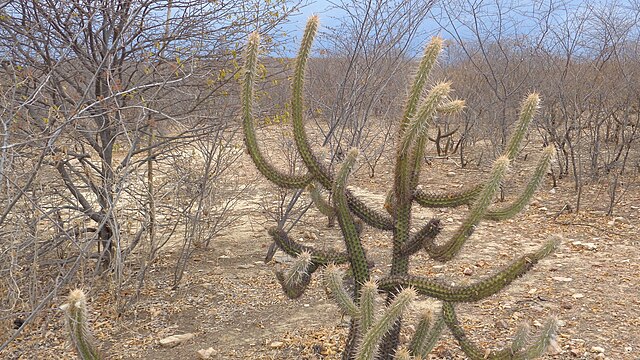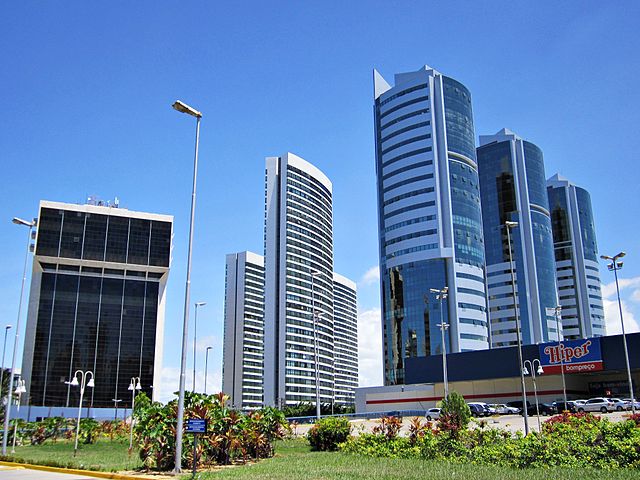The sertão is the "hinterland" or "backcountry" of Brazil. The word refers both to one of the four sub-regions of the Northeast Region of Brazil or the hinterlands of the country in general. Northeast Brazil is largely covered in a scrubby upland forest called caatingas, from the Tupi language, meaning white forest, since leaves fall during dry season, donning all vegetation, mainly bushes and small trees, now reduced to bare branches and trunks, in its characteristic very light grayish, or off-white, hues. Its borders are not precise. Due to lengthy and unpredictable droughts it is an economically poor region that is well known in Brazilian culture, with a rich history and folklore. The sertão is also detailed within the famous book of Brazilian literature Os Sertões, which was written by the Brazilian author Euclides da Cunha.
Sertão
Sertão in the Grande Sertão Veredas National Park
Rainbow at Brazilian Sertão (desert). Cícero Dantas, Bahia, Brazil.
The Sertão (desert) of Brazil
The Northeast Region of Brazil is one of the five official and political regions of the country according to the Brazilian Institute of Geography and Statistics. Of Brazil's twenty-six states, it comprises nine: Maranhão, Piauí, Ceará, Rio Grande do Norte, Paraíba, Pernambuco, Alagoas, Sergipe and Bahia, along with the Fernando de Noronha archipelago.
View of a sugar-producing farm (engenho) in colonial Pernambuco by Dutch painter Frans Post (17th century).
The Historic centre of Salvador, Bahia, was declared a UNESCO World Heritage Site in 1985.
Recife is the largest metropolitan area of the Northeast Region, and the third largest city of the region.
Coconut trees in Pernambuco








